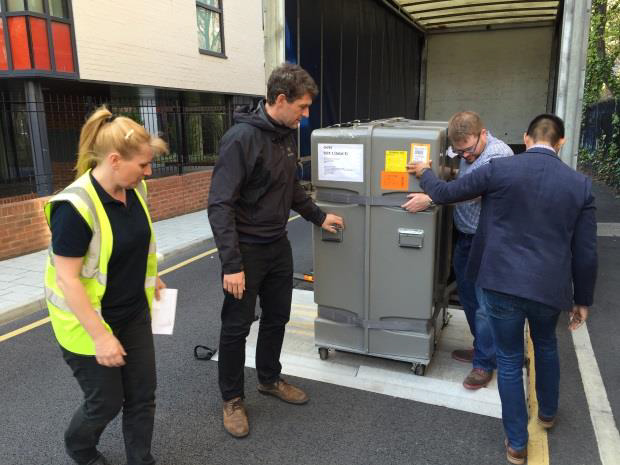FEI and the University Of Liverpool

FEI and the University Of Liverpool (UK) have entered into an agreement to undertake novel research in the field of Petroleum Reservoir Geoscience using QEMSCAN® technology.
Prof Richard Worden, the lead academic in the Department of Earth, Ocean and Ecological Sciences at Liverpool, sees the new QEMSCAN® technology as a step change in the petrographic analysis of rocks, enabling his students to gain unrivalled insights into oil and gas sandstone and carbonate reservoir quality.
QEMSCAN® data from subsurface petroleum reservoir samples will be compared to traditional forms of data such as point counting using light optics and phase analysis using X-ray diffraction. In collaboration with oil and gas exploration and production companies, QEMSCAN data will further be integrated with sedimentological, petrophysical, geomechanical and engineering data to help derive a new way of characterising and quantifying rock properties.
The system will be used to quantify the amount, type and distribution of mineral grains that are present in oil and gas reservoirs, the shape and size of the grains, the abundance of pores present that are capable of storing oil and gas and the nature of the throats between pores that will allow the oil or gas to flow.
“Having the QEMSCAN® in the context of the reservoir geology-focus of Liverpool’s Sedimentary Geology Research Group puts us at the leading edge of reservoir rock characterisation in the UK.”
Liverpool’s Petroleum Reservoir Geoscience MSc students will use the QEMSCAN® for their research projects, working with a range of oil and gas companies to solve burning questions about reservoir quality in UK and global reservoirs. It is expected that there will be multiple extra published outputs each year as a direct result of the new research capability with profound impacts likely in the realm of applied digital rock description.
The facility will form the basis of a new level of collaboration between Liverpool and FEI involving developing new approaches to reservoir characterisation. The QEMSCAN® is planned to be the start of a “Rock and Materials 2D-4D Characterisation Centre at Liverpool”.